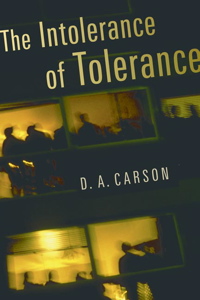 D.A. Carson’s latest book, The Intolerance of Tolerance, could not be more timely. It’s a good and important book to read. You can read the first 30 pages of it here.
D.A. Carson’s latest book, The Intolerance of Tolerance, could not be more timely. It’s a good and important book to read. You can read the first 30 pages of it here.
In a recent interview with John Starke he explained the difference between the “old tolerance” and the “new tolerance”:
The old tolerance presupposed another system of thought already in place—Christianity, communism, Naziism, Buddhism, secularism—whatever. The issue then became how much deviation from that system could be tolerated before coercive force is applied. To the extent that one allowed deviation, one was tolerant; correspondingly, where one judges that deviation has gone too far (e.g., almost everyone agrees, even today, that pedophilia goes beyond the pale), then coercive force—in short, intolerance—is a virtue. It was quite possible to disagree strongly with what a person was saying, but still tolerate the opinion that was perceived to be aberrant, on the ground that it was better for society to allow such opinions than to coerce silence from those articulating them.
But invariably, tolerance has its limits. The new tolerance (1) tends to insist that those who merely disagree with others, at least in several spheres, are intolerant, even if no coercive force is applied; (2) tends to make such tolerance the supreme good, independently of surrounding systems of thought; and (3) tends to be remarkably blind in regard to its own intolerant condemnation of everyone who disagrees with its own definition of tolerance. The result is that in many domains, in many discussions, the question is rarely “Is this true?” but “Is anyone offended?” Rigorous discussion of content soon shuts down; truth is demoted; various forms of class warfare are encouraged; in some domains it becomes wrong (supreme irony) to say that anyone is wrong.
See also these MP3s, part 1 and part 2, where Carson addresses these issues.


















